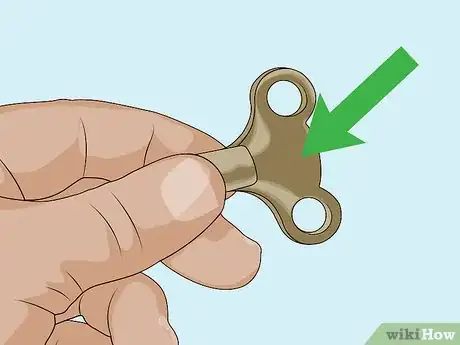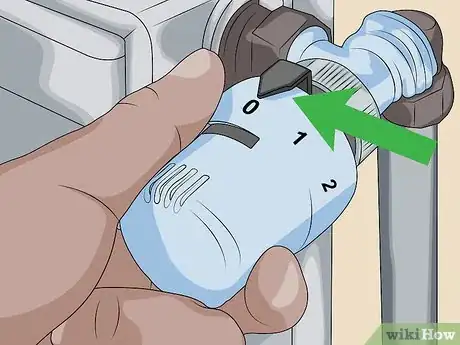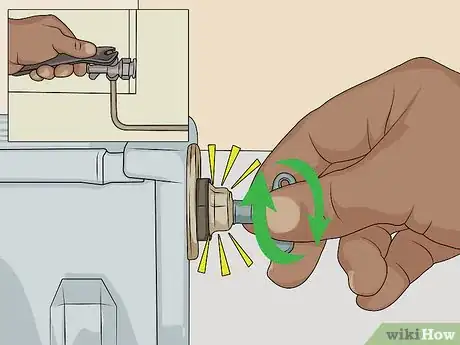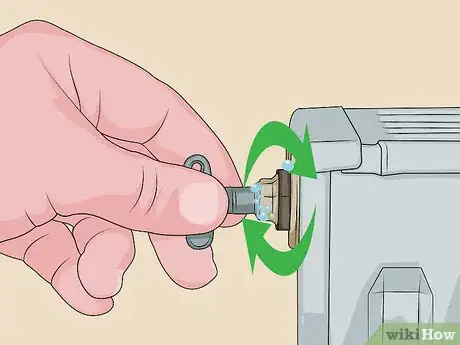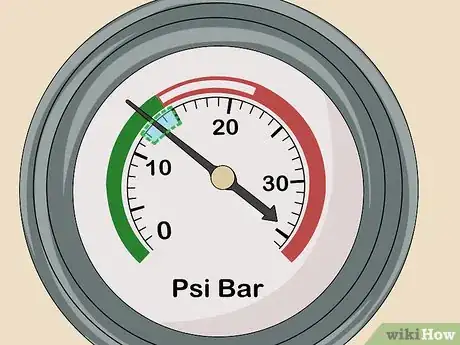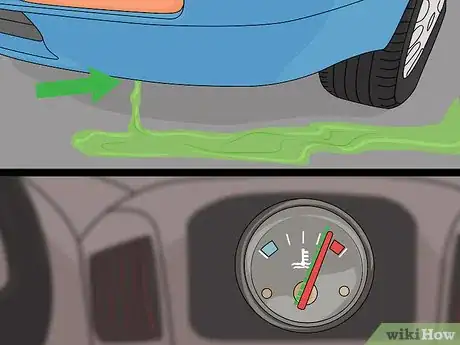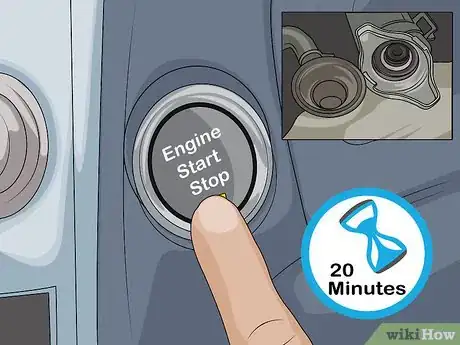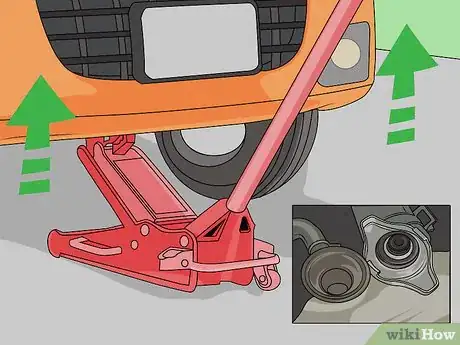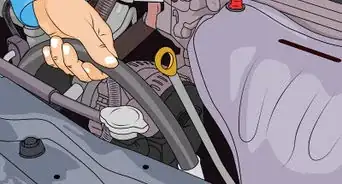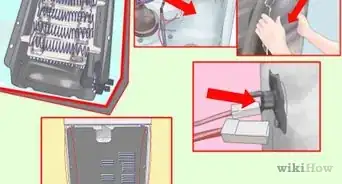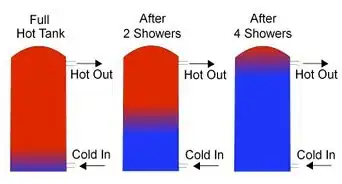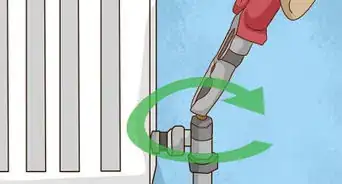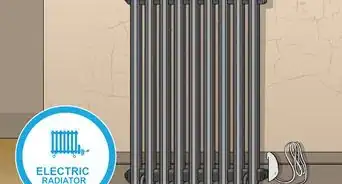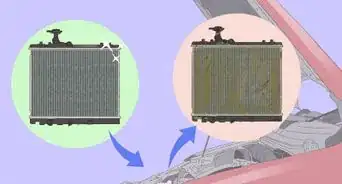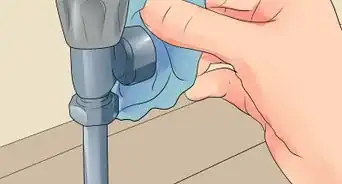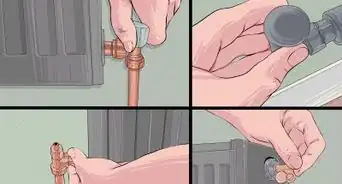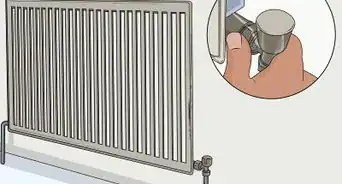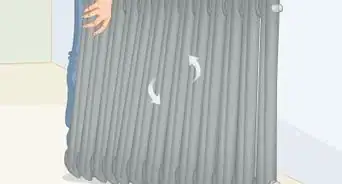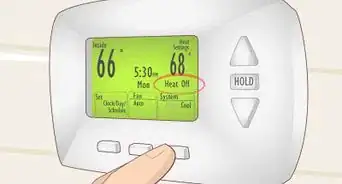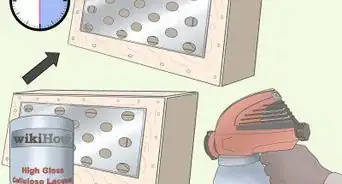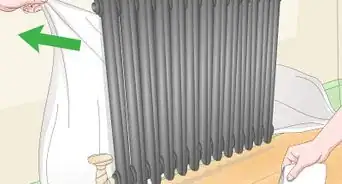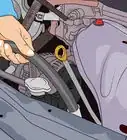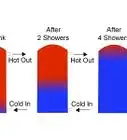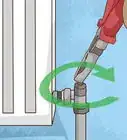This article was co-authored by Duston Maynes. Duston Maynes is an Automotive Repair Specialist at RepairSmith. Duston specializes in leading a team that handles a variety of automotive repairs including replacing spark plugs, front and rear brake pads, fuel pumps, car batteries, alternators, timing belts, and starter motors. Duston holds an Associate’s degree in Automotive/Diesel Technology from The Universal Technical Institute of Arizona and is a Certified Diagnostic Technician and Automobile Mechanics Technician through BMW STEP. RepairSmith received The 2020 Big Innovation Award by Business Intelligence Group and The Startup of the Year by the American Business Awards. RepairSmith was also included in Built in LA’s 50 Startups to Watch and The Business Intelligence Group’s 52 Names Leading the Way in Customer Service. RepairSmith offers in-home services to provide car owners convenient and complete auto repair everywhere.
There are 9 references cited in this article, which can be found at the bottom of the page.
wikiHow marks an article as reader-approved once it receives enough positive feedback. This article received 12 testimonials and 86% of readers who voted found it helpful, earning it our reader-approved status.
This article has been viewed 1,106,930 times.
Does a radiator in your house feel cold even when you have the heat on? Is your car's temperature meter above its normal operating level? In either case, your radiator may contain trapped air that's obstructing its normal flow. Luckily, this common problem is easily fixed. With a few simple tools, the radiator in your car or home will soon be doing what it's supposed to do - effectively radiating heat.
Things You Should Know
- A radiator needs bleeding when air gets trapped inside of it, which obstructs the system's airflow. This is true for both car and home radiators.
- In a home radiator, open a radiator valve and, with your radiator key, open the bleed valve. Keep it open until a steady stream of water falls out.
- To bleed a car radiator, loosen its bleeder valve until you hear a hissing sound. When the car releases a steady stream of coolant, tighten it back up.
Steps
Home Radiator
-
1Diagnose your radiator. A radiator that needs bleeding has cool air trapped in its upper portions. Thus, when you turn on the heat, either the entire radiator will feel cold or the top of the radiator will feel cold while the bottom feels warm.[1] Unfortunately, a cold radiator can also signify other problems. Before proceeding, check for these other common radiator issues listed below. If none seem to fit, your radiator probably needs a simple bleeding. Be careful - radiators can get quite hot. Protect your hands when you're feeling a radiator for warmth.
- If you have multiple radiators in your house and all of them are cold or lukewarm, you probably have a larger issue with your heating system - your water heater may be malfunctioning or you may have a buildup of sludge or sediment somewhere in your heating system[2] (see: How to Flush a Water Heater.)
- If your radiator problem is accompanied by an accumulation of water beneath the radiator, your radiator has a leak. Try turning your heat off, then tightening the nut(s) on your radiator's inlet valve. If this doesn't fix the problem, the nut may be corroded - replace them or call a professional.
- If the radiators on the upper floors of your house aren't heating up but the radiators on the lower floors are, your heating system may not be operating at a high enough pressure to get hot water to the top floors of your house.[3]
-
2Find a radiator key. If you've decided to bleed your radiator your first step should be to find something to open the radiator's "bleed valve." Look for a small valve at the top of one end of your radiator. On this valve, there will usually be small square bit which can be turned to adjust the valve. Radiator keys, cheap metal implements designed for opening and closing radiator valves, are available at most hardware stores. Find a radiator key that's the correct size for your valve or, alternatively, search your tool chest for a small wrench or other tool that's the right size to turn the valve.[4]
- Some modern radiators are equipped with valves that are designed to be turned with a simple flathead screwdriver.[5]
- Before proceeding, make sure you have a radiator key, a screwdriver, a wrench or some combination of implements so that you'll be able to open the valves on every radiator in your house. When bleeding one radiator, it's best to bleed every one in a house.
Advertisement -
3Turn off your heat. Ensure that your central heating is switched off before bleeding, as an active heating system can introduce more air into the system. You want your radiator's contents to settle completely before releasing the air trapped within. Allow time for the heat in your system to dissipate, then feel all over your radiator for heat. If any part of your radiator is still hot, wait for it to cool completely before proceeding to the next step.[6]
-
4Open your radiator's valves. Ensure that both the intake and exit valves of the radiator are turned to the "open" position. Then, insert your radiator key (or screwdriver, etc.) into the bleed screw in the bleed valve at the top of the radiator. Turn the screw counter-clockwise to open the valve. You should hear a hissing sound as air escapes from your radiator.[7]
- Opening the bleed valve allows trapped cold air to escape, which is replaced with liquid from your heating system via the pipes connected to your heating system.
-
5Catch drips from the valve. As air escapes from your radiator, water will likely sputter from the bleed valve. Hold a kitchen towel or cloth under the bleed screw to catch any drips. Alternatively, use a small bowl or dish.
-
6Wait for water to squirt out of the bleed valve. When a steady stream of water (not a sputtering mixture of air and water droplets) squirts through the bleed valve, you've released all of the air trapped in your radiator. Re-tighten your bleed valve (turn the bleed screw clockwise) and ensure that there are no leaks. Use a rag to wipe up any water that's splashed around your radiator.[8]
-
7Repeat this process on all the radiators in your house. To ensure all excess air has been drained from your heating system, it's best to bleed all of your radiators, even if you've only been having problems with one. For a well-maintained heating system, you should try bleeding your radiators regularly. An annual bleeding plus a bleeding after any repairs or modifications to your heating system is usually plenty.
-
8Check your boiler's pressure level. By releasing excess air from your radiators, you've lowered the overall pressure of your house's heating system. If the pressure's fallen too low, heat might not reach some of your radiators (especially ones on the top floors of your house.) To restore your heating system's pressure, it may be necessary to top off your boiler with water.[9]
- For residential heating purposes, a pressure level of around 12-15 psi should suffice. The higher the pressure, the greater the height the height that heat from your system will be able to travel. Especially short or tall houses may require lesser or greater boiler pressure, respectively.[10]
- If your boiler has an automatic fill system, your boiler should maintain a pressure reading of about 12-15 psi without any work on your part. If not, add water manually - open the boiler's water feed valve until the pressure gauge reads about 12-15 psi.
Car Radiator
-
1Look for symptoms that your car's radiator isn't working. A car's radiator needs bleeding for the same reason that a home's radiator does - pockets of air have become trapped in the car's cooling system. This prevents antifreeze from circulating effectively, causing the car to overheat. If you observe one or more of the following symptoms, your car's radiator may need bleeding:
- Abnormally high temperature readings on your dashboard temperature meter.[11]
- Fluid boiling out of your radiator.
- Odd smells from your engine, especially sweet smells (caused by antifreeze leaking and/or burning up.)
- A low coolant light when you first start the vehicle.[12]
- Additionally, it can be a good idea to bleed your radiator after performing maintenance or part replacement on your cooling system. Air can be introduced to the system during maintenance work - keep an eye on your temperature gauge after modifying your cooling system in any way.
-
2Locate and loosen your car's bleeder valve. Some cars have bleeder valves incorporated into the cooling system which function by releasing trapped air, just like the bleeder valves on a home radiator. Consult your owner's manual to find the precise location of this valve - usually it's located at your cooling system's highest point to most effectively release air, which naturally rises.[13]
- To bleed a car's radiator via a bleeder valve, simply loosen it until you hear the hissing sound of air escaping. Use a cloth to catch any sputtering coolant, then re-tighten the valve when the valve releases a steady stream of coolant.[14]
- Some cars don't have special bleeder valves. Don't worry - it's still possible to bleed these cars' radiators via other processes (see below.)
- Be sure the car is cool when you do this—don't try to get the air of of a car that's still hot.[15]
-
3Start the car with the radiator cap off. Another easy way to bleed the car's radiator is simply to allow it to idle with the radiator cap removed (this is also a great option if your car doesn't come equipped with a special bleeder valve.) Remove the radiator cap, then allow your car to run for about fifteen to twenty minutes. The air pockets should be forced through the cooling system and bubble out of the car's radiator.[16]
-
4Elevate your car. Air naturally rises, so by raising the front of your car, putting the radiator at a higher point than the rest of your cooling system, you can speed the release of air from your system. Carefully use a jack to raise your car - most cars come with one, but if yours didn't, they're available at auto supply stores. Ensure your radiator cap is loosened or removed before lifting the car.[17]
- In certain special car varieties, the radiator may not be located at the front of the car - consult your car's owner's manual if you're not sure.
-
5Perform a "flush and fill." After you've bled a car's radiator, it can be a good idea to add new coolant. Trapped air can artificially inflate a car's coolant reading - you may be running low on coolant without having realized it. Drain old coolant from your system and add fresh coolant, observing any special instruction in your owner's manual. Below are general instructions for replacing your car's coolant:[18]
- Allow the engine to cool completely.
- Place a drainage pan under your radiator's drain valve to collect old coolant.
- Add water to the car's radiator until it's full, then allow it to drain out of the drain valve under the car.
- Close the drain valve and add fresh coolant, generally a 50/50 mix of antifreeze and distilled water (not tap water, which can form mineral deposits.) Do not overfill the coolant when you do this.[19]
- Bleed your radiator again to eliminate any air introduced during the flush and fill.
Expert Q&A
-
QuestionCan you bleed a car radiator when the heating is on?
 Duston MaynesDuston Maynes is an Automotive Repair Specialist at RepairSmith. Duston specializes in leading a team that handles a variety of automotive repairs including replacing spark plugs, front and rear brake pads, fuel pumps, car batteries, alternators, timing belts, and starter motors. Duston holds an Associate’s degree in Automotive/Diesel Technology from The Universal Technical Institute of Arizona and is a Certified Diagnostic Technician and Automobile Mechanics Technician through BMW STEP. RepairSmith received The 2020 Big Innovation Award by Business Intelligence Group and The Startup of the Year by the American Business Awards. RepairSmith was also included in Built in LA’s 50 Startups to Watch and The Business Intelligence Group’s 52 Names Leading the Way in Customer Service. RepairSmith offers in-home services to provide car owners convenient and complete auto repair everywhere.
Duston MaynesDuston Maynes is an Automotive Repair Specialist at RepairSmith. Duston specializes in leading a team that handles a variety of automotive repairs including replacing spark plugs, front and rear brake pads, fuel pumps, car batteries, alternators, timing belts, and starter motors. Duston holds an Associate’s degree in Automotive/Diesel Technology from The Universal Technical Institute of Arizona and is a Certified Diagnostic Technician and Automobile Mechanics Technician through BMW STEP. RepairSmith received The 2020 Big Innovation Award by Business Intelligence Group and The Startup of the Year by the American Business Awards. RepairSmith was also included in Built in LA’s 50 Startups to Watch and The Business Intelligence Group’s 52 Names Leading the Way in Customer Service. RepairSmith offers in-home services to provide car owners convenient and complete auto repair everywhere.
Automotive Repair Specialist No, you shouldn't. It's not a good idea to bleed a radiator while your vehicle is still hot.
No, you shouldn't. It's not a good idea to bleed a radiator while your vehicle is still hot. -
QuestionHow do you bleed a car radiator system?
 Duston MaynesDuston Maynes is an Automotive Repair Specialist at RepairSmith. Duston specializes in leading a team that handles a variety of automotive repairs including replacing spark plugs, front and rear brake pads, fuel pumps, car batteries, alternators, timing belts, and starter motors. Duston holds an Associate’s degree in Automotive/Diesel Technology from The Universal Technical Institute of Arizona and is a Certified Diagnostic Technician and Automobile Mechanics Technician through BMW STEP. RepairSmith received The 2020 Big Innovation Award by Business Intelligence Group and The Startup of the Year by the American Business Awards. RepairSmith was also included in Built in LA’s 50 Startups to Watch and The Business Intelligence Group’s 52 Names Leading the Way in Customer Service. RepairSmith offers in-home services to provide car owners convenient and complete auto repair everywhere.
Duston MaynesDuston Maynes is an Automotive Repair Specialist at RepairSmith. Duston specializes in leading a team that handles a variety of automotive repairs including replacing spark plugs, front and rear brake pads, fuel pumps, car batteries, alternators, timing belts, and starter motors. Duston holds an Associate’s degree in Automotive/Diesel Technology from The Universal Technical Institute of Arizona and is a Certified Diagnostic Technician and Automobile Mechanics Technician through BMW STEP. RepairSmith received The 2020 Big Innovation Award by Business Intelligence Group and The Startup of the Year by the American Business Awards. RepairSmith was also included in Built in LA’s 50 Startups to Watch and The Business Intelligence Group’s 52 Names Leading the Way in Customer Service. RepairSmith offers in-home services to provide car owners convenient and complete auto repair everywhere.
Automotive Repair Specialist Check the manufacturer's recommendations—some cars need an electric water pump, while others require a certain bleed procedure or a special tool.
Check the manufacturer's recommendations—some cars need an electric water pump, while others require a certain bleed procedure or a special tool. -
QuestionMy valves are at the bottom?
 Community AnswerYes, there are big handle valves at the bottom, don't touch those. You're looking for a very small, pencil thickness valve at the top where you would use the special key you buy at any hardware or home improvement store.
Community AnswerYes, there are big handle valves at the bottom, don't touch those. You're looking for a very small, pencil thickness valve at the top where you would use the special key you buy at any hardware or home improvement store.
Warning
- The information in this article is intended to provide general answers for frequently asked questions about this topic, and may not be applicable to all vehicles. Please refer to your vehicle’s owner’s manual for details about maintenance intervals and other vehicle specifications. If you are unsure about your ability to perform any repair, we recommend contacting a certified automotive technician to perform the necessary work.
Things You'll Need
- A radiator key
- 1 kitchen towel or a small bowl
- Your car's owner's manual
- Small wrenches or screwdrivers
References
- ↑ https://www.uswitch.com/energy-saving/guides/how-to-bleed-a-radiator/
- ↑ https://www.plumbcare.com/blog/2017/10/5-steps-to-take-when-your-radiators-wont-heat-up
- ↑ http://www.oldhousejournal.com/how_to_take_care_of_your_radiators/magazine/1563
- ↑ https://sse.co.uk/help/home-services/bleeding-a-radiator
- ↑ https://www.uswitch.com/energy-saving/guides/how-to-bleed-a-radiator/
- ↑ https://www.uswitch.com/energy-saving/guides/how-to-bleed-a-radiator/
- ↑ https://www.npower.com/help-and-support/guides/how-to-bleed-a-radiator/
- ↑ https://www.npower.com/help-and-support/guides/how-to-bleed-a-radiator/
- ↑ https://www.npower.com/help-and-support/guides/how-to-bleed-a-radiator/
- ↑ https://www.npower.com/help-and-support/guides/how-to-bleed-a-radiator/
- ↑ Duston Maynes. Automotive Repair Specialist. Expert Interview. 10 June 2021.
- ↑ Duston Maynes. Automotive Repair Specialist. Expert Interview. 10 June 2021.
- ↑ https://www.carsdirect.com/car-repair/how-to-bleed-a-radiator-an-auto-diy-maintenance-guide
- ↑ Duston Maynes. Automotive Repair Specialist. Expert Interview. 10 June 2021.
- ↑ Duston Maynes. Automotive Repair Specialist. Expert Interview. 10 June 2021.
- ↑ https://mechanicbase.com/coolant/bleed-cars-cooling-system/
- ↑ https://www.carsdirect.com/car-repair/how-to-bleed-a-radiator-an-auto-diy-maintenance-guide
- ↑ https://shop.advanceautoparts.com/r/car-projects/how-to-flush-radiator-and-change-coolant
- ↑ Duston Maynes. Automotive Repair Specialist. Expert Interview. 10 June 2021.
About This Article
Bleeding a radiator refers to the process of releasing the excess air that gets trapped in your car's pipes over time. Trapped air will cause the top of your radiator to become cold, so bleed your radiator whenever you notice the pipes at the top becoming much cooler than the pipes at the bottom. To bleed your radiator, you'll need to get a radiator key from your local hardware store. Depending on the model of your vehicle, you may be able also be able to use a flathead screwdriver, so check your owner's manual. Next, find your bleed valve by looking on each side of the radiator for a small valve at the top. Then, place a cloth or bucket underneath the bleed valve to catch any water that spills out. Grab a second bucket to hold directly under the bleed valve as you empty it. Next, insert your radiator key into the valve and slowly turn it counterclockwise. Continue to turn the key until you start to hear air escaping. When you do, take your hand off of the radiator key and leave it in the slot to let the radiator bleed. Once the sound of the air escaping starts to dissipate, water may leak out. Use your bucket to catch the water and wait for the air to finish escaping. Once the air is gone, turn the radiator key clockwise to close the bleed valve. Continue turning the key until it won’t tighten any further to shut the valve and finish bleeding the radiator. If you need to learn how to bleed a radiator unit in your home, keep reading the article!

